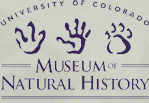 |
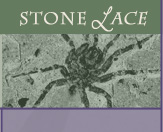 |
||
Page 2 To view larger versions of the images below, click on a thumbnail image or the specimen name. The larger version will display in a new browser window. Use the page number links below the images to go to the next page or return to a previous page. 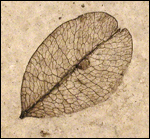 Koelreuteria allenii, Common Name: Golden-rain tree (seed pod) (UCM #34187). This is a seed pod of a tree that is most similar to a modern tree called Koelreuteria paniculata, which is indigenous to central and southern China. The tree belongs to the family Sapindaceae, which is found primarily in tropical regions of the world. Golden-rain tree is commonly cultivated for ornamental use in gardens. Koelreuteria allenii, Common Name: Golden-rain tree (seed pod) (UCM #34187). This is a seed pod of a tree that is most similar to a modern tree called Koelreuteria paniculata, which is indigenous to central and southern China. The tree belongs to the family Sapindaceae, which is found primarily in tropical regions of the world. Golden-rain tree is commonly cultivated for ornamental use in gardens.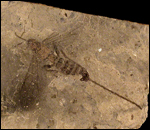 Lithoserix williamsi, Common Name: Horntail (UCM #31179). These are large wasps. They use their ovipositors (which might look like stingers - but they're not) to lay their eggs inside the wood of trees. Their larvae then develop inside the tree, boring through the wood of conifers and hardwoods that have already been weakened. Lithoserix williamsi, Common Name: Horntail (UCM #31179). These are large wasps. They use their ovipositors (which might look like stingers - but they're not) to lay their eggs inside the wood of trees. Their larvae then develop inside the tree, boring through the wood of conifers and hardwoods that have already been weakened.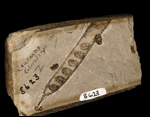 Prosopis linearifolia, Common Name: Mesquite (bean) (UCM #8623). Prosopis belongs to one of the largest modern flowering plant families, the Fabaceae, which has legume fruit. The beans of mesquite are one of the earliest known foods of prehistoric humans in the Americas. Beans have been known to be crushed into gruel, and sometimes fermented, for food. Mesquite plants have also been used to treat certain cancerous conditions and sore throat. Prosopis linearifolia, Common Name: Mesquite (bean) (UCM #8623). Prosopis belongs to one of the largest modern flowering plant families, the Fabaceae, which has legume fruit. The beans of mesquite are one of the earliest known foods of prehistoric humans in the Americas. Beans have been known to be crushed into gruel, and sometimes fermented, for food. Mesquite plants have also been used to treat certain cancerous conditions and sore throat.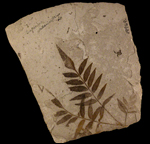 Rhus stallariaefolius, Common Name: Sumac (UCM #19969). Sumac is most commonly found in temperate regions today. This species is characterized by leaves composed of a central stalk with 13 serrated leaflets and clusters of fruit enclosed in a dark red, furry spike. Some modern sumac species are used as teas or spices, but beware! Close relatives of sumac include Rhus toxicodendron, otherwise known as poison ivy! Rhus stallariaefolius, Common Name: Sumac (UCM #19969). Sumac is most commonly found in temperate regions today. This species is characterized by leaves composed of a central stalk with 13 serrated leaflets and clusters of fruit enclosed in a dark red, furry spike. Some modern sumac species are used as teas or spices, but beware! Close relatives of sumac include Rhus toxicodendron, otherwise known as poison ivy!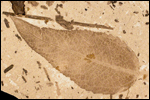 Populus crassa, Common Name: Willow (UCM #10256). This specimen contains a seemingly endless array of fossils, though they are virtually all plant fossils. The leaf is a nice example of a tree that we commonly see in the area today, a willow in the genus Populus. Modern relatives of this genus include the Quaking Aspen that turns such a beautiful yellow in the fall and the Cotton Wood, which litters our landscape with its fluffy white seeds. The fossil branch on the slab is special, because it shows evidence of insect activity. The bulge near the bottom of the stick is a gall, a deformation that occurs when an insect lays its eggs within the plant. Populus crassa, Common Name: Willow (UCM #10256). This specimen contains a seemingly endless array of fossils, though they are virtually all plant fossils. The leaf is a nice example of a tree that we commonly see in the area today, a willow in the genus Populus. Modern relatives of this genus include the Quaking Aspen that turns such a beautiful yellow in the fall and the Cotton Wood, which litters our landscape with its fluffy white seeds. The fossil branch on the slab is special, because it shows evidence of insect activity. The bulge near the bottom of the stick is a gall, a deformation that occurs when an insect lays its eggs within the plant. |

|
||
|
|
|||
|
|||
